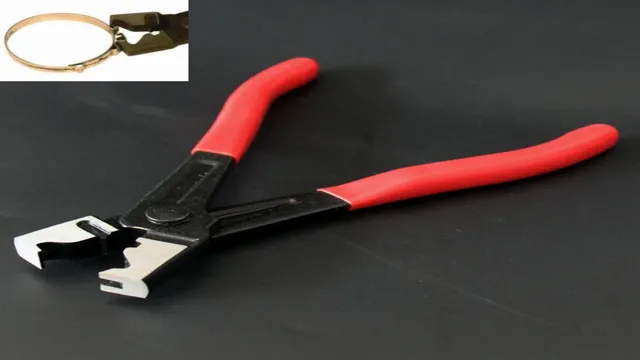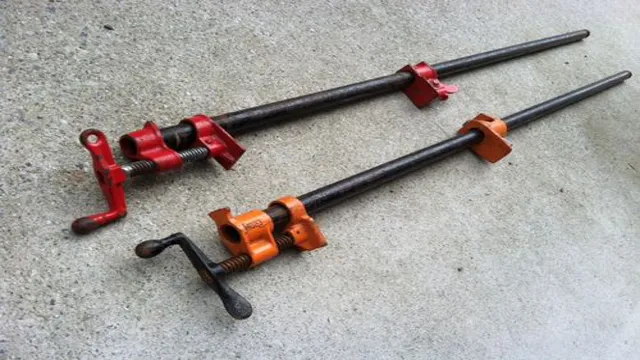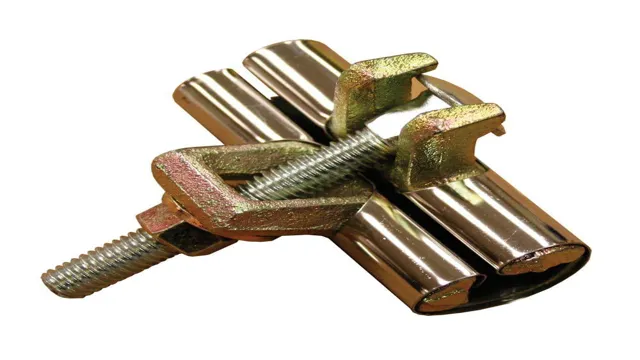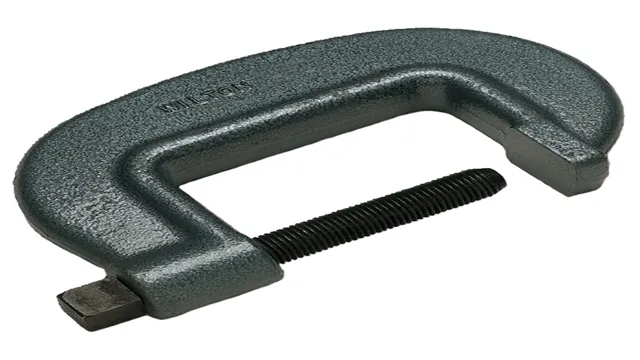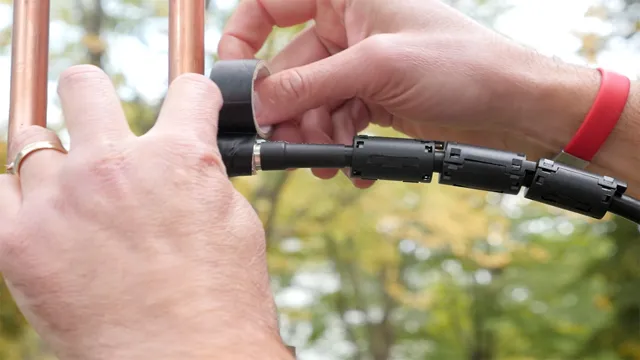Are Pipe Clamps Good for Woodworking? The Ultimate Guide
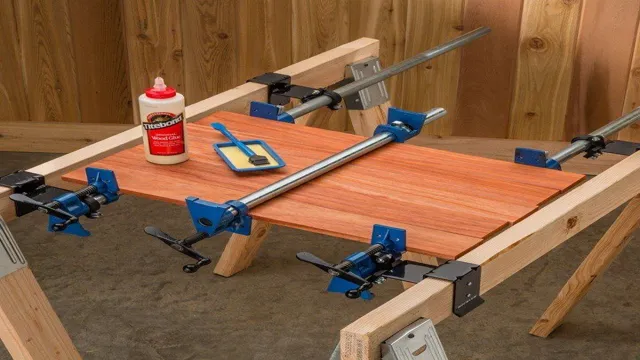
When it comes to woodworking, one of the most crucial components is a reliable clamp system. Pipe clamps are a common choice for woodworkers due to their versatility and strength. In this comprehensive look at pipe clamps for woodworking, we’ll explore their benefits, how they work, and what to look for when selecting the right ones for your project.
So, whether you’re a seasoned woodworker or just starting in the craft, read on to discover everything you need to know about pipe clamps for woodworking.
What are Pipe Clamps?
Pipe clamps have become increasingly popular among woodworkers in recent years, and for good reason. Not only are they versatile and cost-effective, but they offer a unique level of stability that other clamping methods simply can’t match. Whether you’re working with oddly shaped pieces, or trying to secure delicate cuts without damaging the material, pipe clamps allow for a level of precision that can be hard to achieve with other clamps.
Another major advantage of pipe clamps is their adjustability. Thanks to their threaded design, they can be tightened or loosened to fit a wide range of shapes and sizes. So, if you’re wondering if pipe clamps are good for woodworking, the answer is a resounding yes! They’re an essential tool for any woodworker looking to create strong and precise joints.
Definition and Types
Pipe clamps are devices used to secure and support pipe and tubing in various applications. They come in different types such as U-bolt clamps, screw clamps, and spring clamps, among others. U-bolt clamps provide a strong grip on pipe and tubing, making them ideal for heavy-duty applications.
Screw clamps, on the other hand, are adjustable and easy to install, making them suitable for a wide range of pipe sizes. Spring clamps are lightweight and perfect for situations where quick and temporary clamping is needed. Pipe clamps are commonly used in plumbing, construction, and automotive industries.
They help prevent pipe movement, minimize vibration, and reduce noise levels. Overall, pipe clamps offer a cost-effective solution for securing and stabilizing pipe and tubing.
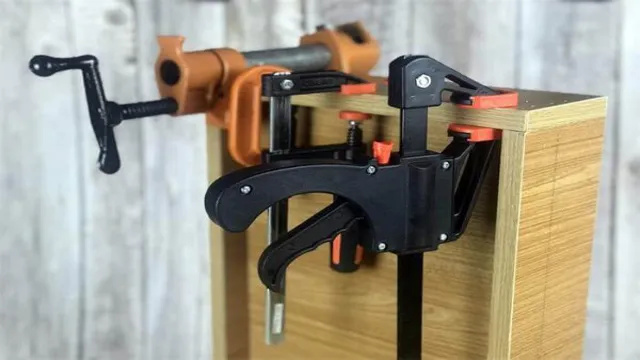
Pros and Cons of Using Pipe Clamps
Pipe clamps are versatile tools used by DIY enthusiasts and professionals to secure different types of pipes and objects in various applications. They consist of two components, a pipe and a clamp head, which are tightened together using adjustable screws or mechanisms. Pipe clamps are commonly used in woodworking, metalworking, plumbing, and other construction projects.
One of the advantages of using pipe clamps is their flexibility; they can be used to grip objects of different shapes and sizes. Additionally, they are relatively easy to use and don’t require specialized training. However, one downside of pipe clamps is that they can leave marks or damage on the surfaces they clamp, especially if the contact surface is not protected.
Moreover, using too much force when tightening can cause the pipe to bend or become deformed, which can affect its ability to grip objects correctly. In summary, pipe clamps are handy tools for holding pipes and objects in different applications, but they should be used carefully to avoid causing any harm or damage.
Using Pipe Clamps for Woodworking
Pipe clamps are an essential tool for woodworking, especially when it comes to gluing pieces of wood together. These clamps are very versatile when it comes to size, enabling you to work with larger and thicker lumber pieces, such as tabletops and bed frames. They’re also convenient because you can quickly attach them to any flat surface, and they give you even pressure across the wood.
This reduces the risk of the wood buckling under too much pressure or the glue separating. So, in short, pipe clamps are excellent for woodworking. They’re simple to use, won’t dent your wood, and are affordable – what more could you want?
Types of Woodworking Projects Suitable for Pipe Clamps
Pipe clamps are an essential tool in any woodworking project. These tools are versatile and can hold pieces of wood together with immense pressure creating strong and sturdy joints. There are numerous types of woodworking projects suitable for pipe clamps.
These include making shelves, tables, bookcases, and cabinets, to name a few. Pipe clamps are particularly useful in larger projects where long pieces of wood must be clamped together. They are also beneficial for delicate projects such as glue-ups and clamping veneers.
Pipe clamps come in different shapes and sizes, and the right clamp for a project depends on the dimensions of the wood. Overall, using pipe clamps in woodworking projects is an effective way to create durable and lasting pieces of furniture or structures.
How to Properly Use Pipe Clamps for Woodworking
If you’re into woodworking, you know how important it is to have the right materials and tools. One tool that many woodworkers use is the pipe clamp, which is great for holding pieces of wood together while glue dries or for securing a piece in place while you cut or sand it. But how do you properly use a pipe clamp? It’s important to make sure you have the right size clamp for the job and that the pipe is straight and free of defects.
One tip is to use a spacer block between the pipe and the wood to prevent dents or damage. Additionally, it’s important to apply pressure evenly and not over-tighten the clamp, as this can cause the wood to warp. With proper use, a pipe clamp can be a valuable tool in your woodworking toolkit for holding your pieces in place and creating precise, beautiful pieces.
Common Mistakes to Avoid When Using Pipe Clamps
Using pipe clamps for woodworking can be a great way to keep your projects stable and secure during the gluing or clamping process. However, there are a few common mistakes to avoid when working with pipe clamps. Firstly, it’s important not to over-tighten the clamps, as this can damage the wood or warp the project.
Additionally, it’s important to ensure that the clamp faces are level and parallel to prevent uneven pressure points. Another mistake to avoid is using too few clamps, as this can result in the wood shifting or sliding during the clamping process. Remember to also use the correct size of clamp for your project and to use protective padding to prevent damage to the wood.
By avoiding these common mistakes, you can make sure that your pipe clamps are a useful tool in your woodworking arsenal.
Comparing Pipe Clamps to Other Clamps
If you’re a woodworker, you know that having the right clamps is essential to your success. One type of clamp that gets a lot of attention is the pipe clamp. But are pipe clamps good for woodworking? The short answer is yes.
Pipe clamps are versatile, strong, and affordable, which makes them a great option for many different woodworking projects. However, they are not the only type of clamp available. Other popular options include bar clamps, parallel clamps, and C-clamps.
Each has its pros and cons, but what it really comes down to is personal preference and the specific needs of your project. That being said, if you’re looking for a solid all-around clamp that won’t break the bank, pipe clamps are definitely worth considering.
Pipe Clamps vs. Bar Clamps
When it comes to clamps, there are a lot of options out there. Two popular choices are pipe clamps and bar clamps. Pipe clamps are known for their versatility and can be used on a variety of materials, including larger pieces of wood.
They are also easy to adjust and require less force to tighten. However, bar clamps provide greater strength and stability, making them a better choice for heavy-duty projects. They also have a longer reach, allowing for larger pieces of material to be held.
Ultimately, the choice between pipe clamps and bar clamps will depend on the specific needs of the project and the materials being used. It’s always a good idea to have both on hand to ensure that you have the right tool for the job.
Pipe Clamps vs. F-Style Clamps
When it comes to clamping, there are many options, but two of the most popular types are pipe clamps and F-style clamps. Both are designed to grip and hold materials in place, but they have some key differences. Pipe clamps consist of a long threaded pipe and two clamping jaws that slide along the pipe.
They offer a lot of versatility because the length of the pipe can be adjusted to suit the size and shape of the workpiece. F-style clamps, on the other hand, have a fixed length bar with a sliding clamping jaw. They are often used for lighter duty work because they don’t offer as much clamping force as pipe clamps.
Ultimately, the choice between pipe clamps and F-style clamps will depend on the project and personal preference. Whatever your choice, it’s important to have a good selection of clamps on hand to ensure that you can tackle any project that comes your way.
Conclusion
In conclusion, the answer is a resounding yes – pipe clamps are a must-have for any woodworking enthusiast. With their durable construction and versatile design, they are ideal for securing a wide range of materials and ensuring stability during the crafting process. So whether you’re a professional woodworker or a DIY enthusiast, investing in a set of quality pipe clamps is a wise decision that will pay off in spades.
After all, when it comes to woodworking, the right tool can make all the difference – and pipe clamps are definitely one of the best!”
FAQs
What are pipe clamps in woodworking?
Pipe clamps are used in woodworking to hold pieces of wood together while the glue dries. They consist of two pieces, a stationary jaw and a sliding jaw, that tighten onto a pipe.
Are pipe clamps good for woodworking?
Yes, pipe clamps are great for woodworking because they provide strong clamping pressure and can be adjusted to fit a wide range of sizes.
How do you use pipe clamps in woodworking?
To use pipe clamps in woodworking, first determine the size of pipe and length of clamp needed. Then attach the stationary jaw to your work surface and slide the sliding jaw onto the pipe. Tighten the clamp until it is snug against your workpiece.
What size pipe should I use with pipe clamps in woodworking?
The size of pipe used with pipe clamps depends on the size of your project. For smaller pieces of wood, a ½ inch pipe may be sufficient. For larger pieces, a ¾ inch or 1 inch pipe may be necessary.
Can pipe clamps be used for edge gluing boards in woodworking?
Yes, pipe clamps can be used for edge gluing boards in woodworking. They provide even pressure along the length of the board to create a strong bond.
Are pipe clamps expensive to use in woodworking?
Pipe clamps can be a cost-effective option for woodworking, as they are generally less expensive than other types of clamps.
What are some alternatives to pipe clamps for woodworking?
Some alternative clamps for woodworking include bar clamps, parallel jaw clamps, and spring clamps. Each type has its own advantages and disadvantages depending on the project at hand.


